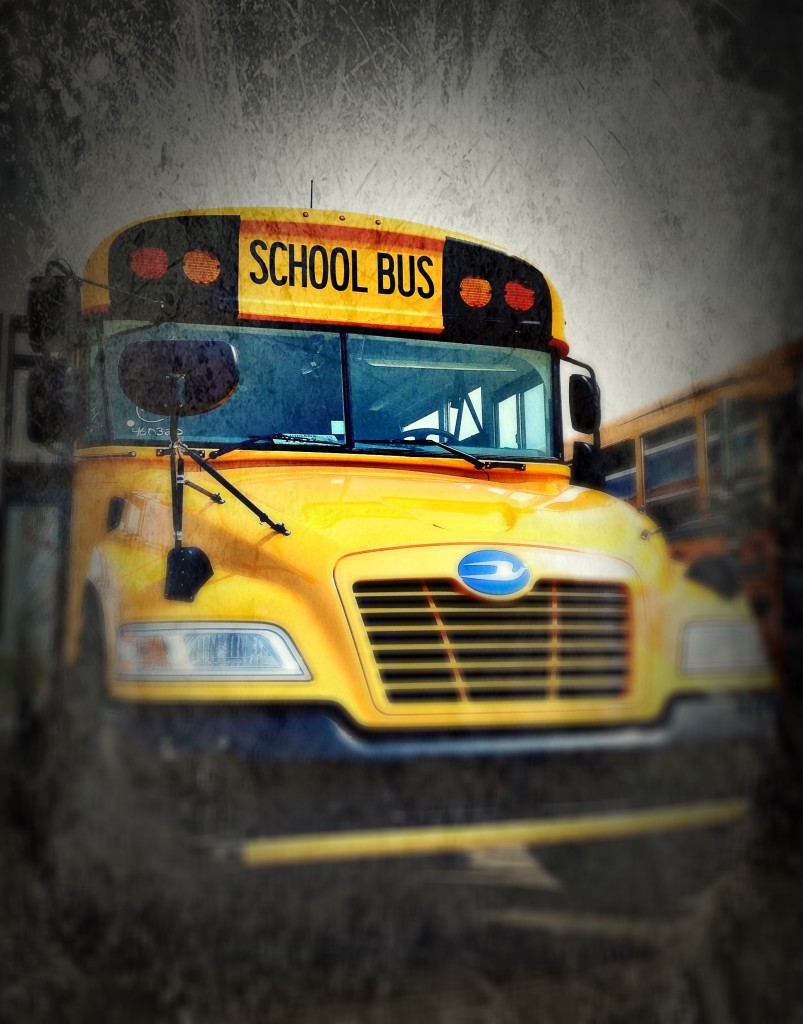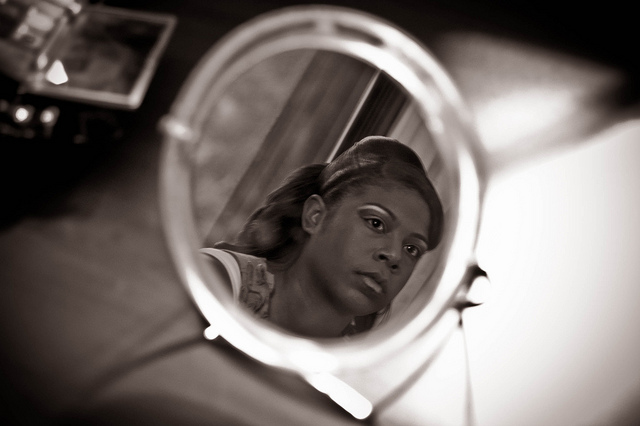By Jennifer Niesslein
I wish I could bring all of us together for a holiday party. The last time I got together with some FGP people, some things that you just can’t through reading and emailing. For instance, I learned that Kim Kankiewicz once gave a voice lesson to Emily Kinney, the actress who played Beth in The Walking Dead—you know, the character known for her singing!
It’s why I love parties, but until I become a deranged millionaire, it can’t happen. Instead, welcome to the virtual one, where you bring your own everything, yet still can attend any time and wherever you are. No dress code whatsoever!
But here’s where we’ll divulge fun facts that you don’t know about Full Grown People’s contributors. Our chit-chat, if you will. Add your own to join the pah-tay!
Katy Read: My grandma dated Johnny Carson’s dad.
William Bradley: On the first day of school, I told my first grade teacher that I had been practicing becoming invisible, so she shouldn’t be alarmed if I seemed to disappear. My mom learned of this when it was written up in the weekly newsletter the school sent to all of the parents.
Jen Maher: I sold candy to Michael Jackson.
Sue Sanders: When I was a kid and lived in Jakarta, I met Muhammad Ali. He (lightly) punched my arm. It kinda hurt.
Meredith Fein Lichtenberg: When I was pregnant with my younger kid, a friend who is a producer needed ultrasound footage for a movie she was making, so she called me to the set and I had the ultrasound they used in the film. (In the film, you see Helen Hunt getting the wand on her belly, but the fetus on the screen is my daughter.) And the OB was played by Salman Rushdie, and we rode in the van together to the set and I could not come up with anything clever to say to him.
Deesha Philyaw: I was born with six fingers—an extra pinky—on my right hand. They lopped it off by wrapping a horsehair stitch tightly around it. I still have a little wart-sized thing where the finger used to be. So I was a polydactyl—not to be confused with pteradactyl.
Sonya Huber: I punched my best friend in the face in first grade as we were standing by our coat hooks, for no reason I can remember, and gave her a nosebleed. I said something that must have been out of a western movie like, “I’ll give you five reasons!” and held up my fingers and then curled them into a fist. Wtf? And sorry, Sarah, I love you!
Rae Pagliarulo: In high school I was suspended (and asked to consult with the school’s head priest privately) after my Religion teacher found me rewriting all the most popular Christmas songs so they featured satanic details. Aka: Here comes Lucifer, here comes Lucifer, right down 666 Lane….
Dina Strasser: I performed as a stand up comic in London in 1993.
Reyna Eisenstark: When I worked as a producer on a public radio show in NYC in, like, 1995, the amazing gay Spanish director Pedro Almodovar was one of the guests. As he was talking to me he could not take his eyes off my boobs. Literally talked to them. Of course I found this hilarious.
Carolyn Edgar: A hotel bellman once tried to pimp me out to Shaquille O’Neal. I was in Chicago on a business trip. Shaq’s team was in town to play the Bulls and they were staying at the same hotel as me. The bellman told me Shaq had asked him to be on the lookout for pretty girls in the hotel. Apparently I fit the bill, so the bellman offered to take me up to Shaq’s room. I had dinner plans that evening, plus I’m nearly two feet shorter than Shaq, so I declined. But sometimes, when I’m trying to read my fellow grad student workshop pieces plus write plus make sure my son is doing his homework plus do a little work for my day job, all before bedtime, I wonder…
Karen Dempsey: As a kid, I wrote a fan letter to OJ SImpson. He didn’t write back.
Kris Guay: I put thousands of dollars on a credit card in my twenties to fly to California to do Werner Erhard’s EST six day course.
Amy Robillard: My second job was at a pretzel place in the middle of the mall, where I would uncurl the frozen pretzels and reshape them into the first letters of my friends’ names. Literacy pretzels, I called them.
Randy Osborne: Rick Bass once let me use his computer to send a freelance piece to my editor from Bass’s home in Yak Valley, Idaho. This was in the days of those plastic mini-disks with the sliding metal piece. Well, when I pulled the disk out of his computer, the metal thing came off and stayed inside! I feared I had ruined his computer. We spent the afternoon on the floor, dismantling it and tweezing out the obstruction. One way to get to know somebody. (Still remember his shocked face when I told him, and the first thing he said: “You didn’t lose your work, did you?”)
Barbara Allen Clarke: I met Fidel Castro in Cuba—almost—since his bodyguard stood between us, but I shook his hand. He said “thank you” for bringing two freighters full of hospital supplies to the people.
Jacob Margolies: I worked one summer selling ice cream as a Good Humor man.
Kristin Wagner: I have synesthesia, where I see numbers as colors. I was angry doing multiplication tables in school because I couldn’t remember 7×4 was 28. I kept thinking, “Green times orange does not equal yellow-blue!”
Gina Easley, our amazing photographer!: I got to meet and hang out with Jeff Buckley a few times in San Francisco. One of those times I asked if I could get a picture with him. My (then) boyfriend took the picture but he was having trouble with the camera, so it took a while to get the shot. The whole time, as we waited for our picture to be taken, Jeff was rubbing my back seductively, without my boyfriend or anyone knowing. I was having trouble containing myself—ha! I told my Boyfriend afterward and he got angry and jealous, but years later I thought it made for a good story.
Nikki Schulak: I used to handle alligators and pull pythons out of pillow cases in the name of environmental education.
Jody Mace: I was thrown off the junior high newspaper staff because I wrote satire when I wasn’t supposed to, which was bullshit. Also, I’m the co-inventor on two patents.
Cindy Price: I drank beers with Jimmy (and Rosalynn) Carter in a remote Florida panhandle town while discussing boiled peanuts. At length.
Sarah Einstein: I’m an actual princess, because my husband, Dominik, is a bona fide prince (from the Shaumburg line).
Cathy Bell: My great-grandparents ran the animal shelter in Canon City, Colorado, when my dad was a boy (and up until I was two). One day Johnny Cash came in looking to adopt a dog. My grandma asked Johnny to wait until my dad got home from school so he could meet him. My dad says Johnny’s parting words were, “Never get into the music business, son.” (And I know this isn’t really about me, so here’s one. I hate my ears. They stick out. I’ve heard every joke, so I keep them hidden if possible. Ha.)
Jena Schwartz: My first boyfriend was Eric Mabius, of “L-Word” fame. We went out for three weeks when I was in ninth grade and he was a junior. (Ironically, it would be close to twenty-five years before I came out!)
Kate Haas: During Christmas breaks from college, I used to work at Lord and Taylor’s at the Garden State Plaza in New Jersey. Alone in a dingy little back room, I would box up gifts people had bought to have shipped and get them ready to mail out. It was extremely boring. So I would write little notes to the giftees and slip them in the box, like: “I bet Jane Austen would have loved this nightgown!” or “Red red wine makes you feel so fine…” Never got caught.
Antonia Malchik: I have minor prosopagnosia (face-blindness). If someone’s face is really distinctive, I can recognize them years after I last saw them, but for most people I can’t recognize them from one day to the next if I see them out of context and often not even in context. This manifests depressingly often at my kids’ preschool, when I panic and try to remember everyone’s names and stories/families in the morning. These are people I’ve known for years.
Joelle Renstrom: I had a pint of Guinness with Seamus Heaney in a pub in Dublin. Totally starstruck. Also, I’m afraid of clowns. And spiders.
Tamiko Nimura: I’m half Japanese American, half-Filipina, with a Scottish middle name after a character in a Broadway musical.
Renee Simms: On a flight to San Francisco I once sat next to singer and bassist Meshell Ndegeocello. “I have every album you’ve ever made,” I blurted as my creepy introduction. We talked about books and writers the entire flight.
Sarah Buttenwieser: I was on Oprah with my mother; we were a mother and daughter against parental consent for abortion—because I’d had an abortion at seventeen. What the audience did not know was that I was twenty-three or twenty-four and an abortion counselor and my mother ran a pro-choice social service agency. The next day, back at work, I counseled a teenager the cllinic with her parents—and they recognized me from Oprah!
Zahie El Kouri: I once cooked dinner for the bassist of Radiohead in George Plimpton ‘s apartment.
Laurence Dumortier: I lost my virginity in the Paris catacombs.
Lesléa Newman: I have a green belt in Shuri-Ryu Okinawan Karate and during my test, I knocked a woman over solely by using my voice.
Jane Eaton Hamilton: I used to fly glider planes.
Lisa Romeo: I once hired a nobody comedian named Ray Romano to entertain at a New Jersey charity dinner, cost: $300. Circa 1990.
Anjali Enjeti: When I was in my mid-twenties, I was a guest on Oprah’s Book Club, you know, one of the five other people who talk with Oprah and the author. The book was Melinda Haynes’s Mother of Pearl. I had gone through this really rigorous phone interview process with the producers, was picked, flown to Chicago, put up in a hotel, taken to the studio in a limo. Of the other women selected, I was the only person who had mixed feelings about the book. During the conversation with Oprah and the author, when I finally got an opportunity to speak, Oprah interrupted me and changed the subject. That’s pretty much all you see in the episode, me, having spent weeks carefully formulating opinions, only to be shut out. So much for my fifteen minutes of fame!
Wendy Wisner: My first memory is when John Lennon died (I was two, almost three). When I was little, we lived on Martha’s Vineyard and I used to play with Carly Simon’s kids. I went to Wavy Gravy’s hippie camp. My husband was born in a barn, and lived in a teepee when he was a baby. Bottom line: raised by hippies and married one.
Rebecca Altman: I. Hate. Buttons. Deeply. Won’t wear them. Ever.
McKel Jensen: I gag at wet paper towels or tissue. I also can’t stand the feeling of raw wood (like on a #2 pencil or a popsicle stick). It’s like nails on a chalkboard.
Jennifer D. Munro: In one day, I sold the world’s known supply of organic miso and umeboshi paste to a heavily armed, end-of the-world cult. I had to give them a guarantee it would last forever. “Sure,” I assured my contact, who disappeared soon after. “Of course it does!” What are they gonna do, climb out of their underground cement bunkers after the apocalypse to hunt me down when they find mold in their 55-gallon drums of fermented beans and pickled, unripe prunes (seriously, how would they even know it had gone bad, especially with the flavor enhancer of nuclear fallout)? I like miso and ume as much as the next person, but I hope they packed some chocolate, too.
Jennifer Richardson: I once bummed a cigarette off of Johnny Rotten then proceeded to smoke with him outside a Santa Monica record store. I had no idea who he was. British husband put me up to it.
Susan McCulley: I played in the scrum of a couple of women’s rugby teams.
Sara Bir: I just joined the local roller derby team.
Linda Crowe: I once nailed my own hand to a tree by accident. On the darker side, a cousin of mine was executed on Virginia’s death row.
Abbie Gascho Landis: I spent a summer in college farming with nuns. Milked cows by hand. Made hay. Transported a llama to the vet in a VW van with Mother Hildegard driving in full habit (on a ferry between the San Juan Islands).
Melissa Ballard: My grandpa was a dog warden, and when I visited my grandparents during summer vacations, I went to work with him. I love dogs, but have a healthy respect for the ones I don’t know!
Sara Marchant: My paternal grandmother tattooed my shoulder when I was six weeks old (without my mother’s knowledge) knowing I was going to be raised away from my biological father’s family. When I was growing up I was told it was a “birthmark.” I’ve never covered it up because it is all I have of my father.
Jane Hammons: I’ve had really bad migraines for most of my life. When I was in second grade I discovered that putting a wire hanger on my head (hook at the back) somehow made them better. I boarded the school bus wearing this self-styled headgear, and no one said a word, which should have been my first clue. Not until my teacher asked me to take it off, did anyone make a comment. When I refused, I was sent to the office where my mother picked me up and I explained about the headaches. She said it was okay to wear at home but not to school. The next day when I got on the bus without the hanger, kids started calling me hanger head. All was back to normal.
Carol Paik: Massages make me tense.
Catherine Newman: I have two, unrelated, both from when I was sixteen: I shoplifted a Minnie Mouse ring from Disneyland, and it is the only material object I have ever stolen. That same year, my family was eating dinner at a cafe in NYC, and we watched Madonna and Sean Penn have a huge fight outside the window. They were both shorter than we’d imagined.
Joyce Tomlinson: My grandfather was the illegitimate grandson of Queen Victoria.
Shuly Cawood: I have double-first cousins. And yes, we look like we are siblings.
Brooke Ferguson: I have a fear of fruit that borders on a phobia. With some work it’s gotten better over the last five years or so — I can eat fruits like apples and oranges, but super squishy things, like berries or bananas, are out of the question. I can’t eat them without thinking that I am eating something alive.
Terry Barr: Saw Lou Reed and Laurie Anderson at a phone booth on a New York street once. Laurie smiled at me, and Lou looked wise as always.
Andrea Jarrell: My grandparents were rodeo riders. I didn’t meet my dad until I was seventeen but watched him on TV throughout my childhood on shows like Charlie’s Angels and Rockford Files. When I did meet him, he regaled me with stories of sleeping on Sammy Davis, Jr.’s couch and partying with the Beatles. In Paris, while studying abroad, goody-goody me ditched all my classes to teach aerobics in the Marais and I had to make up every class senior year.
Allison Green: I’ve never been a mother, but I have thirteen grandchildren. My wife had three children, and they have all had children. My own mother, who has no grandchildren (I’ve tried to invite her to see mine as hers; she doesn’t), thinks this is profoundly unfair.
And, me, Jennifer Niesslein: I don’t know how to make a pot of coffee.
What about you? Add your own in the comments! I’ll be reading them all until our next essay, out in 2016.

 Follow
Follow





